Fossil hunting is an exciting activity as you may well find a piece of history dating back millions of years! There are many different types of fossils you can come across along north Norfolk's Deep History Coast, each telling a different story about the creatures that lived here.
The rough weather eroding the shoreline during Spring, Autumn and Winter means this is a great time to go fossil hunting (and the beaches are less crowded). Make sure you check tide times before you set off; a falling tide is the safest and most rewarding time on the beach.
See below for the sorts of fossils you’re likely to come across along the Deep History Coast. And if you need help identifying your finds, check the app or our fossil identifier guide. You can also take your fossils along to Cromer Museum.
Belemnite. This small, bullet-shaped fossil is from a squid-like animal, over 70 million years-old. They are actually only the animal’s hard rear part. They look like stone bullets among the chalk – smooth and 2-6cm long.
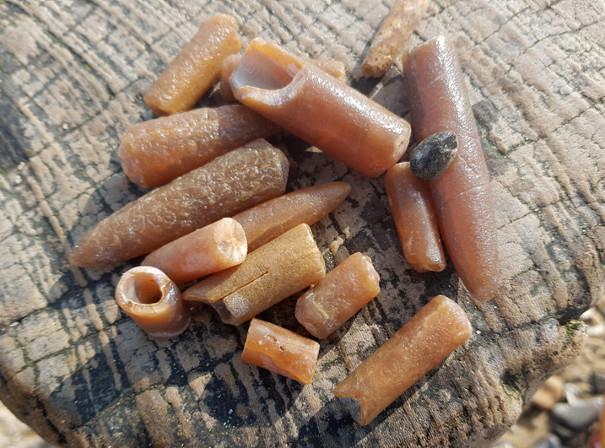
Coprolites. These are pieces of dung from animals that lived here hundreds of thousands of years ago! Look out for smooth, rounded or lozenge shaped stones, sometimes thinner at one end. They could be 700,000 year-old hyaena poo!
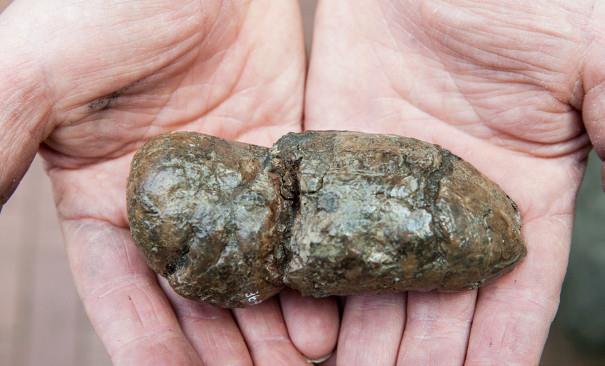
Freshwater mussel. Look out for pieces of dark, mud-coloured mussel shells which are over 500,000 years old. These freshwater mussels lived in the ancient rivers that formed the Cromer Forest-bed Formation and may have been eaten by our early relatives here. Sidestrand is a good place to look.
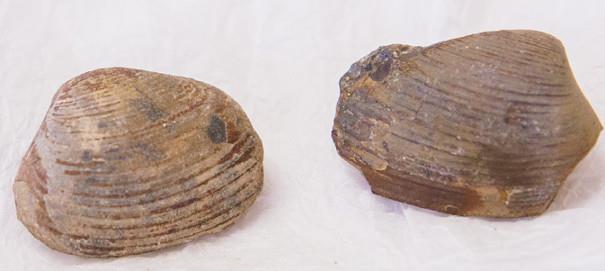
Brachiopods. Small, scallop-like fossils that lived in the tropical seas here over 70million years ago. There were once over 1,200 species – some lived in cold seas, some in warm. Scientists can tell what the climate was like in the past from the brachiopods they find.
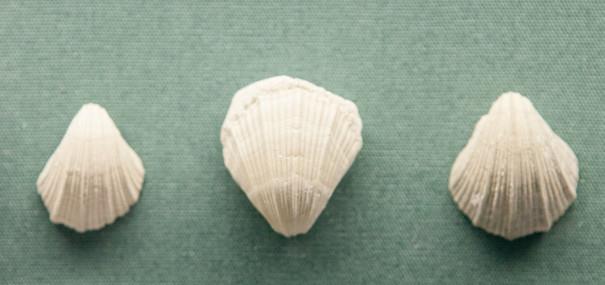
Mammoth fossils. Mammoths are amongst the most commonly found vertebrate fossil remains on the Norfolk coast. Woolly, Steppe and Southern (Mammuthus primigenius, M. trogontherii and M. meridionalis respectively) are the three species that can be found in the county. However, most of these fossils are fragments of bone, tusk and teeth. The skeleton of the mammoth found at West Runton is a Steppe Mammoth and was an ancestor of the Woolly Mammoth. Keep an eye out for mammoth teeth they look like slices of very stale bread. They can be up to 30cm and ridged.
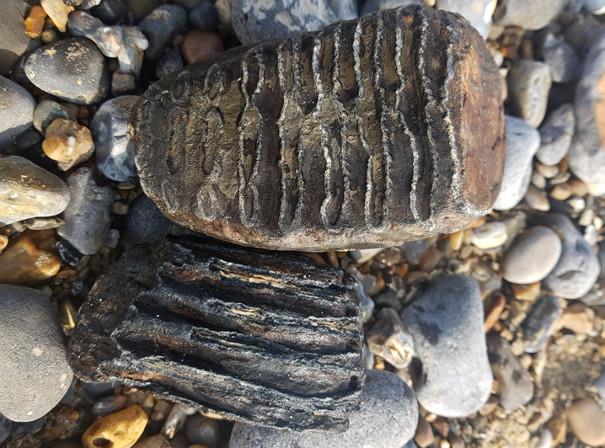
Echinoids. These are small, rounded ‘pebbles’ with five lines radiating from the top. Echinoids are sea urchins that lived here over 70millon years ago when the chalk was forming. You can sometimes find whole ones among the shingle.
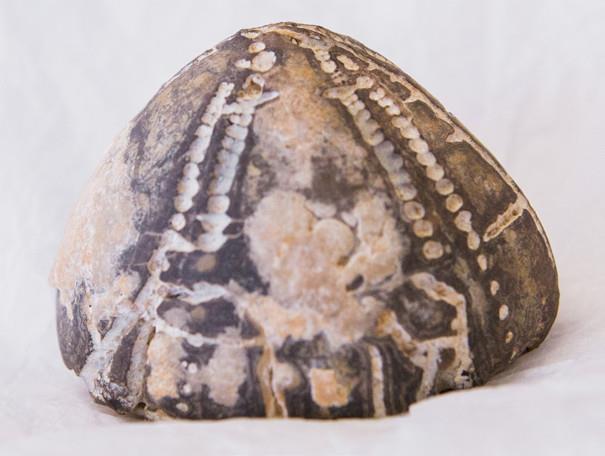
Deer antler fragments. Look out for ridged, cylindrical stones – they might be pieces of deer antlers. Red, Roe, Fallow and even extinct Giant deer roamed here over 500,000 years ago, when the Cromer Forest-bed was forming. West Runton is one of the best places to find antler remains.
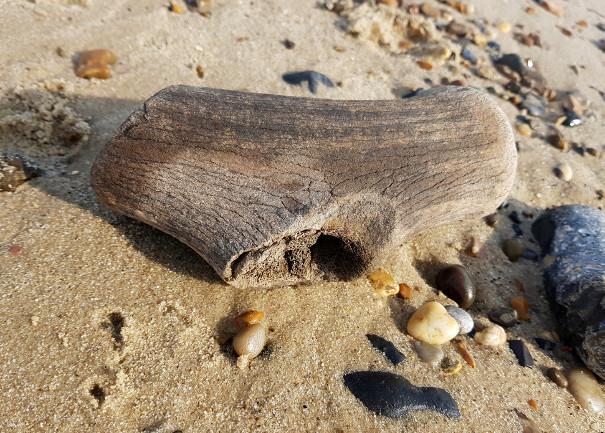
Sponge. Fossil sponges often look like bubbly, flower-like patterns within a flint pebble. Sponge skeletons usually contain silica, the glass-like mineral which forms flint pebbles within the chalk. Even though they look like plants, they are actually animals.
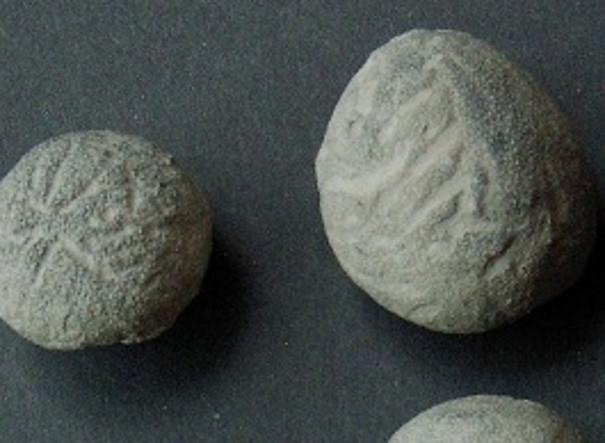
Flint handaxe. A rare find – hunt for black, grey or orange-brown glassy flints with sharp, chipped edges. Flint tools were made by early people by carefully knapping away at the edges of large pebbles to create a sharp blade. It took ages, so they were very precious.
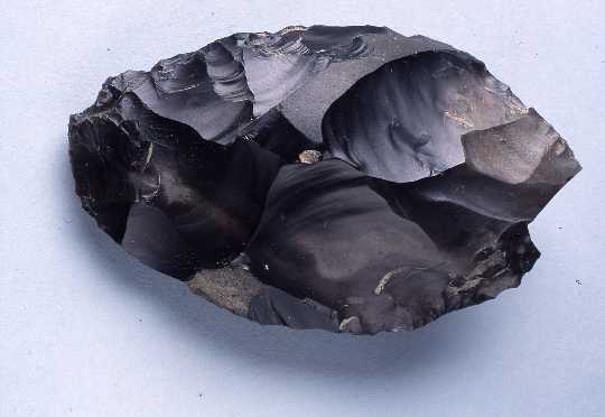
Paramoudra (pot stones). These are large flint stones with curious holes in the middle. Some scientists think these mysterious holes were formed by burrowing sea creatures – though they look for all the world as if someone has drilled the hole by hand!
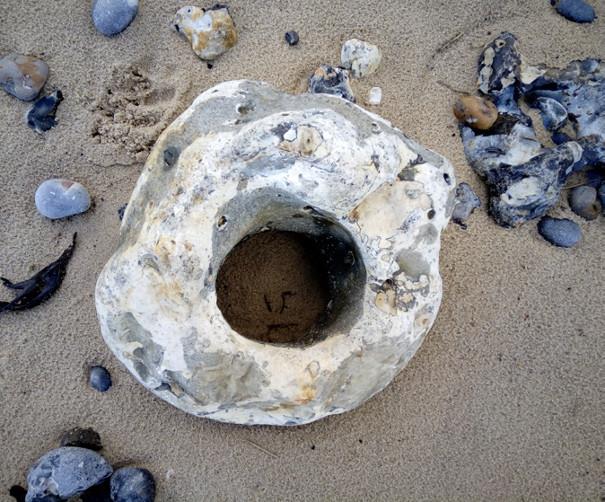
TIPS FOR SAFE AND RESPONSIBLE FOSSIL HUNTING
It’s exciting to see what can be found but there are a few rules that need to be followed to keep fossil hunters safe and to protect the fragile cliffs for future generations. As long as you are not in a protected area, you can pick up small fossils that are lying around on the ground. Please do not dig into the cliffs as this can cause cliff falls. Do not remove any fossils from rocks or cliffs. Large fossils are best left for all to enjoy. If you are lucky enough to come across a rare find, please report it to a museum and if you're in a Site of Specific Scientific Interest, please follow any rules they might have. Always avoid disturbance to wildlife.
Related
Comments
Comments are disabled for this post.






